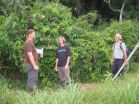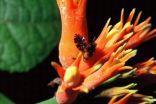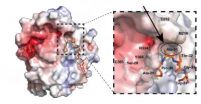(Press-News.org) MADISON — A new study in animals shows that using a compound to block the body's immune response greatly reduces disability after a stroke.
The study by scientists from the University of Wisconsin School of Medicine and Public Health also showed that particular immune cells – CD4+ T-cells produce a mediator, called interleukin (IL) -21 that can cause further damage in stroke tissue. Moreover, normal mice, ordinarily killed or disabled by an ischemic stroke, were given a shot of a compound that blocks the action of IL-21. Brain scans and brain sections showed that the treated mice suffered little or no stroke damage.
"This is very exciting because we haven't had a new drug for stroke in decades, and this suggests a target for such a drug," says lead author Dr. Zsuzsanna Fabry, professor of pathology and laboratory medicine.
Stroke is the fourth-leading killer in the world and an important cause of permanent disability. In an ischemic stroke, a clot blocks the flow of oxygen-rich blood to the brain. But Fabry explains that much of the damage to brain cells occurs after the clot is removed or dissolved by medicine. Blood rushes back into the brain tissue, bringing with it immune cells called T-cells, which flock to the source of an injury.
The study shows that after a stroke, the injured brain cells provoke the CD4+ T-cells to produce a substance, IL-21, that kills the neurons in the blood-deprived tissue of the brain. The study gave new insight how stroke induces neural injury.
Fabry's co-author Dr. Matyas Sandor, professor of pathology and laboratory medicine, says that the final part of the study looked at brain tissue from people who had died following ischemic strokes. It found that CD4+ T-cells and their protein, IL-21 are in high concentration in areas of the brain damaged by the stroke.
Sandor says the similarity suggests that the protein that blocks IL-21 could become a treatment for stroke, and would likely be administered at the same time as the current blood-clot dissolving drugs.
"We don't have proof that it will work in humans," he says, "but similar accumulation of IL-21 producing cells suggests that it might."
Graduate student Benjamin S. D. Clarkson and scientist Changying Ling were key members of the UW research team, as was Dr. Dandan Sun, formerly of the UW neurosurgery department and now at the University of Pittsburgh, and Dr. Vijay Kuchroo, of the Harvard Medical School.
The paper was published this week in the Journal of Experimental Medicine. A link is available here: http://bit.ly/NToPfg
INFORMATION:
The study was supported by the American Heart Association/American Stroke Association, the UW Cellular and Molecular Pathology Graduate Program and the National Institutes of Health via grant numbers NS037570, NS076946, AI048087 and AI068730.
Halting immune response could save brain cells after stroke
2014-03-13
ELSE PRESS RELEASES FROM THIS DATE:
Condon publishes new research in Science
2014-03-13
A wasp's sting might explain it all.
Marty Condon, professor of biology at Cornell College, has been studying flies in the tropics for years, and in a paper published in Science this week, she reports evidence that there is more to a fly's ecological niche than where it lives and what it eats—you have to look at what eats the fly, as well.
In a previous Science paper, Condon and her co-researchers found that there were far more species of flies feeding on tropical flowers than expected. It was counter-intuitive, Condon said, to see so many species of flies filling what ...
Scripps Florida scientists devise new, lower cost method to create more usable fuels
2014-03-13
JUPITER, FL – March 13, 2014 – As the United States continues to lead the world in the production of natural gas, scientists from the Florida campus of The Scripps Research Institute (TSRI) have devised a new and more efficient method with the potential to convert the major components found in natural gas into useable fuels and chemicals—opening the door to cheaper, more abundant energy and materials with much lower emissions.
The research, which was led by TSRI Professor Roy Periana, uses clever chemistry and nontraditional materials to turn natural gas into liquid ...
Scripps Research Institute scientists discover a better way to make unnatural amino acids
2014-03-13
LA JOLLA, CA—March 13, 2014—Chemists at The Scripps Research Institute (TSRI) have devised a greatly improved technique for making amino acids not found in nature. These "unnatural" amino acids traditionally have been very difficult to synthesize, but are sought after by the pharmaceutical industry for their potential medical uses.
"This new technique offers a very quick way to prepare unnatural amino acids, many of which are drug candidates or building blocks for peptide drugs," said Jin-Quan Yu, a professor in TSRI's Department of Chemistry.
Yu's team has reported ...
Scientists find new way to upgrade natural gas
2014-03-13
America's current energy boom may take a new direction thanks to the discovery of a new way to turn raw natural gas into upgraded liquid alcohol fuel.
In the March 14 issue of Science magazine, chemists from Brigham Young University and The Scripps Research Institute detail a process that could reduce dependence on petroleum.
The most unexpected breakthrough in the paper was that ordinary "main group" metals like thallium and lead can trigger the conversion of natural gas to liquid alcohol. The research teams saw in experiments that natural gas to alcohol conversion ...
Stumbling fruit flies lead scientists to discover gene essential to sensing joint position
2014-03-13
LA JOLLA, CA—March 13, 2014—Scientists at The Scripps Research Institute (TSRI) have discovered an important mechanism underlying sensory feedback that guides balance and limb movements.
The finding, which the TSRI team uncovered in fruit flies, centers on a gene and a type of nerve cell required for detection of leg-joint angles. "These cells resemble human nerve cells that innervate joints," said team leader Professor Boaz Cook, who is an assistant professor at TSRI, "and they encode joint-angle information in the same way."
If the findings can be fully replicated ...
A novel battleground for plant-pathogen interactions
2014-03-13
Scientists at The Sainsbury Laboratory in Norwich, with collaborators at Michigan State University and the University of Illinois, have unveiled a new way in which plants perceive pathogens to activate immunity.
They also show how pathogens inhibit the mechanism to cause disease. It was previously only associated with other processes in mammalian cells.
When plants detect microbial molecules, they trigger immune responses to prevent disease. Although several plant immune receptors for these microbial molecules are known, how they are activated once the microbe is recognised ...
When big isn't better: How the flu bug bit Google
2014-03-13
Numbers and data can be critical tools in bringing complex issues into crisp focus. The understanding of diseases, for example, benefits from algorithms that help monitor their spread. But without context, a number may just be a number, or worse, misleading.
"The Parable of Google Flu: Traps in Big Data Analysis" is published in the journal Science, funded, in part, by a grant from the National Science Foundation. Specifically, the authors examine Google's data-aggregating tool Google Flu Trend (GFT), which was designed to provide real-time monitoring of flu cases around ...
More to biological diversity than meets the eye
2014-03-13
Most of us already imagine the tropics as a place of diversity—a lush region of the globe teeming with a wide variety of exotic plants and animals. But for researchers Andrew Forbes and Marty Condon, there's even more diversity than meets the eye.
In a paper published in the March 14 issue of the journal Science, Forbes and Condon report the discovery of extraordinary diversity and specialization in the tropics.
The paper builds upon previous research conducted by Condon, who discovered surprising diversity while researching plant species in South America. Later, she, ...
Saving large carnivores in the ecosystem requires multifaceted approach
2014-03-13
Carnivore management is not just a numbers game, Virginia Tech wildlife scientists assert in response to an article in the Jan. 10 issue of the journal Science that urged "minimum population densities be maintained for persistence of large carnivores, biodiversity, and ecosystem structure."
"This type of approach may fail in social carnivore species," said Kathleen Alexander, an associate professor of fisheries and wildlife conservation in the College of Natural Resources and Environment. "Predator management is incredibly complex and we need to be extremely cautious ...
Unraveling a mystery in the 'histone code' shows how gene activity is inherited
2014-03-13
Cold Spring Harbor, NY – Every cell in our body has exactly the same DNA, yet every cell is different. A cell's identity is determined by the subset of genes that it activates. But how does a cell know which genes to turn off and which to turn on? While the genetic code carried in our DNA provides instructions for cells to manufacture specific proteins, it is a second code that determines which genes are in fact activated in particular cell types.
This second code is carried by proteins that attach to DNA. The code-carrying proteins are called histones. Today, researchers ...






